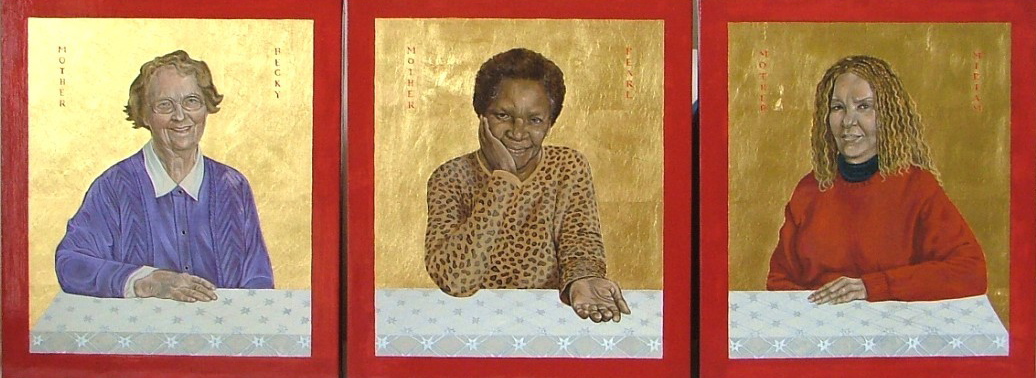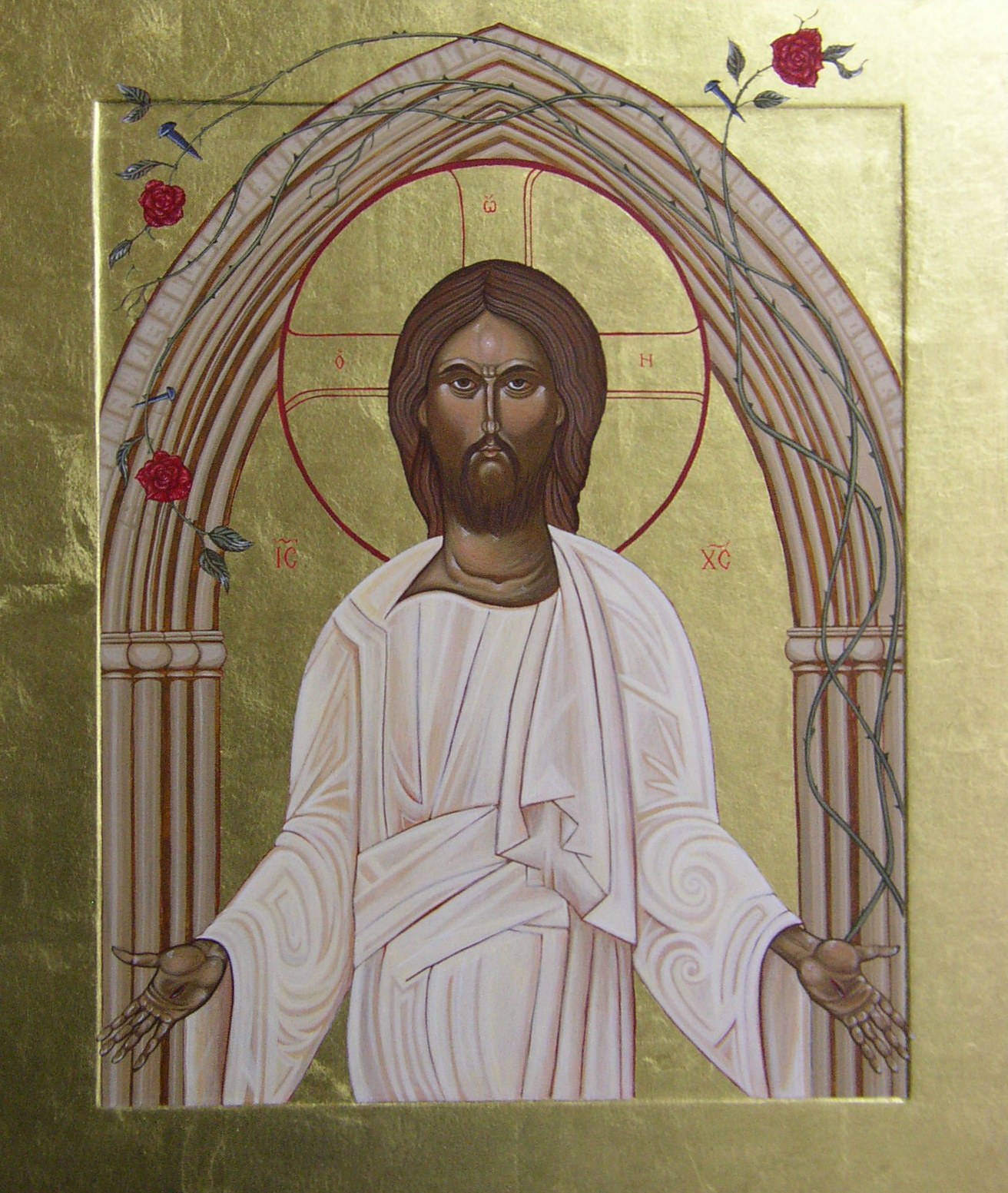This triptych commissioned by the Bishop of London, depicts three smiling women from the congregation of St John on Bethnal Green Church, seated around a table.
The women reflect the diverse nature of the congregation at St John's as well as the local East End community.
Each woman is a wife, mother, and grandmother, a person of faith and a committed hard working member of their church, something I wanted to celebrate. The three women also symbolise in part the important role of women – particularly older women – in the Church of England.
The opened hand of Mother Pearl is held out to greet the viewer to the table, a place of fellowship and hospitality while Mother Becky and Mother Miriam look on. What offering do you the viewer bring to the table? The stars on the table cloth symbolise the many descendants of Abraham. The colours the three women wear represent the Christian liturgical seasons and the gold leaf a belief in the 'sainthood of all believers.'
Prints of the 3 Mothers are available here


